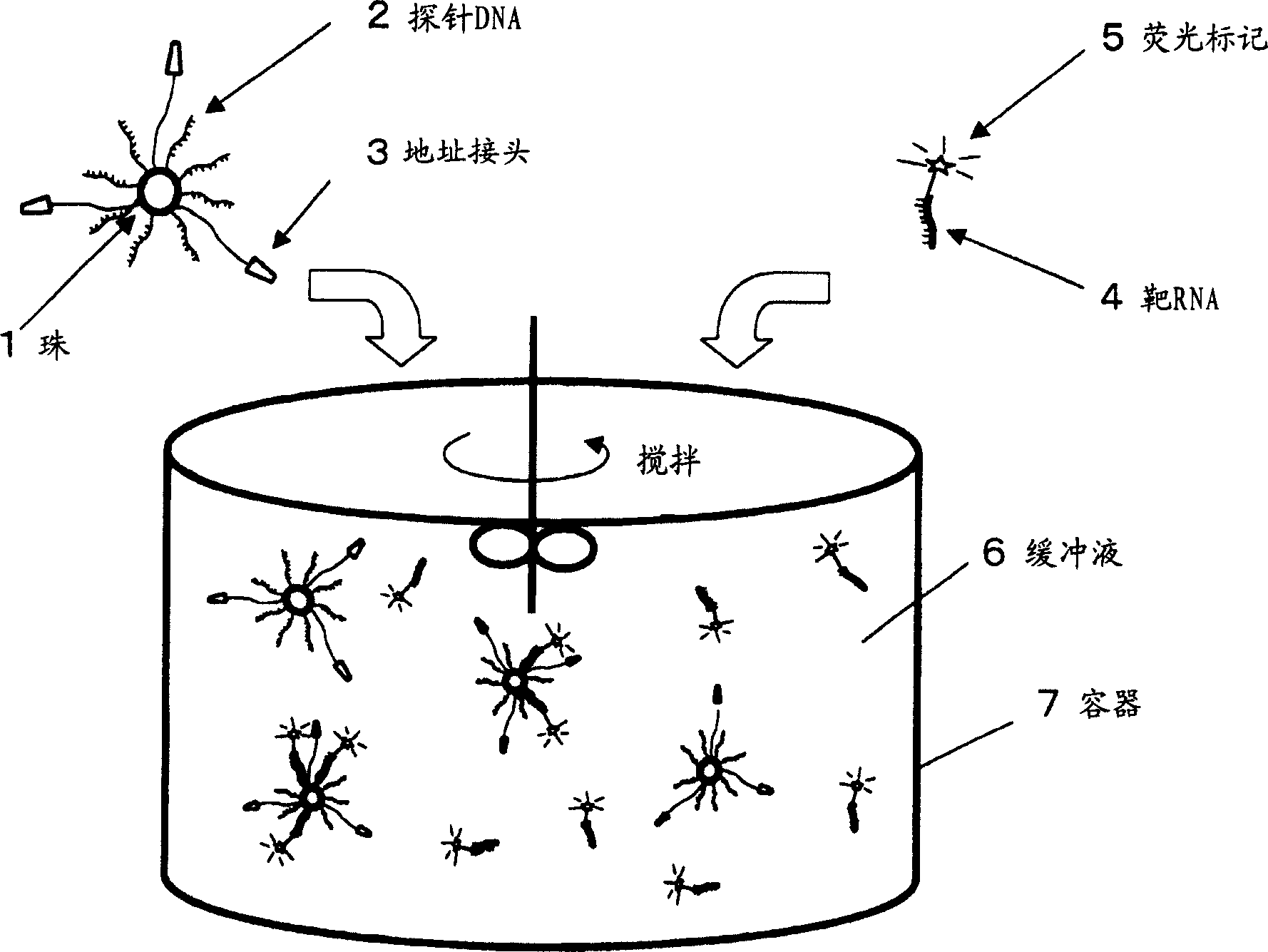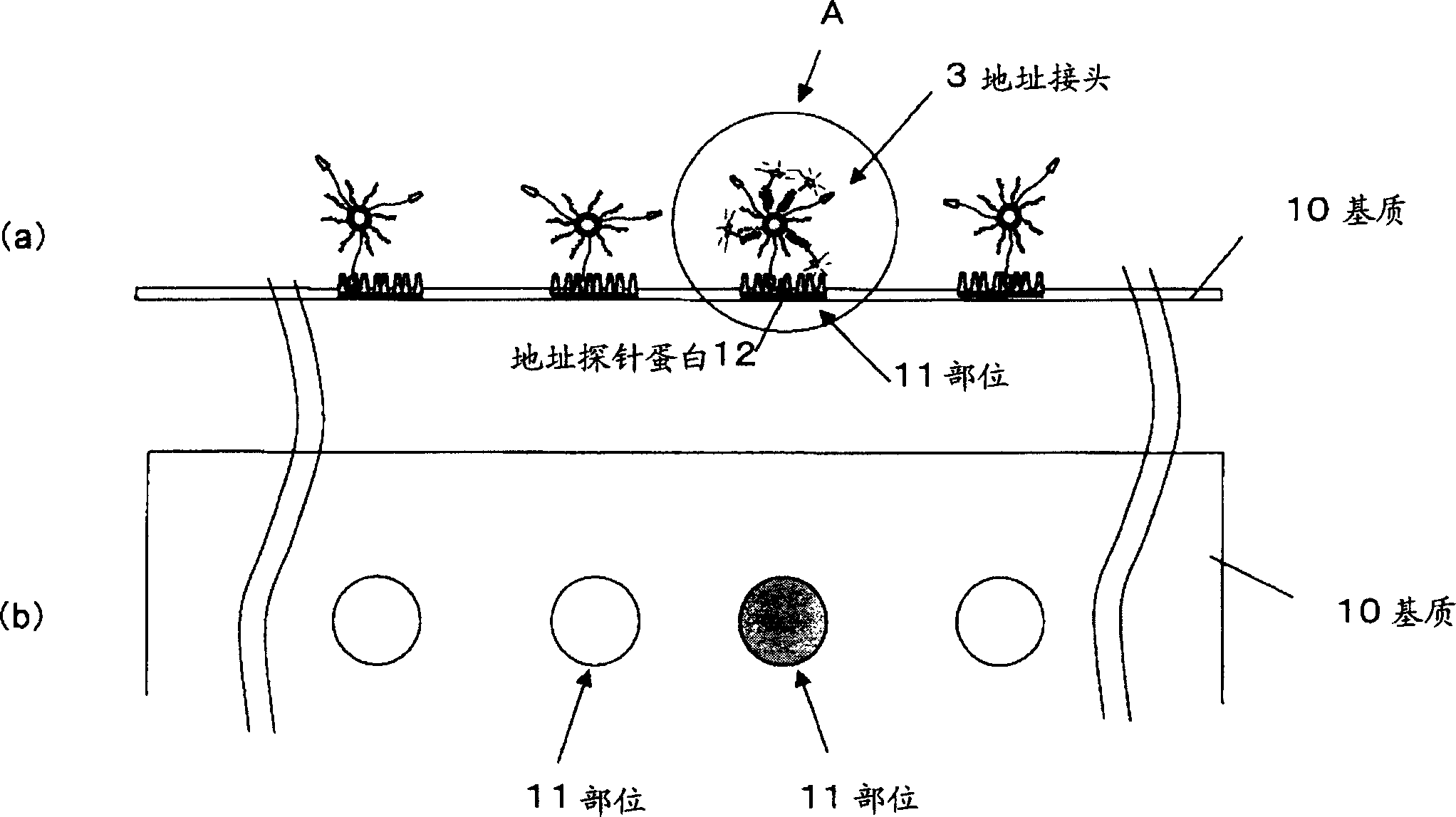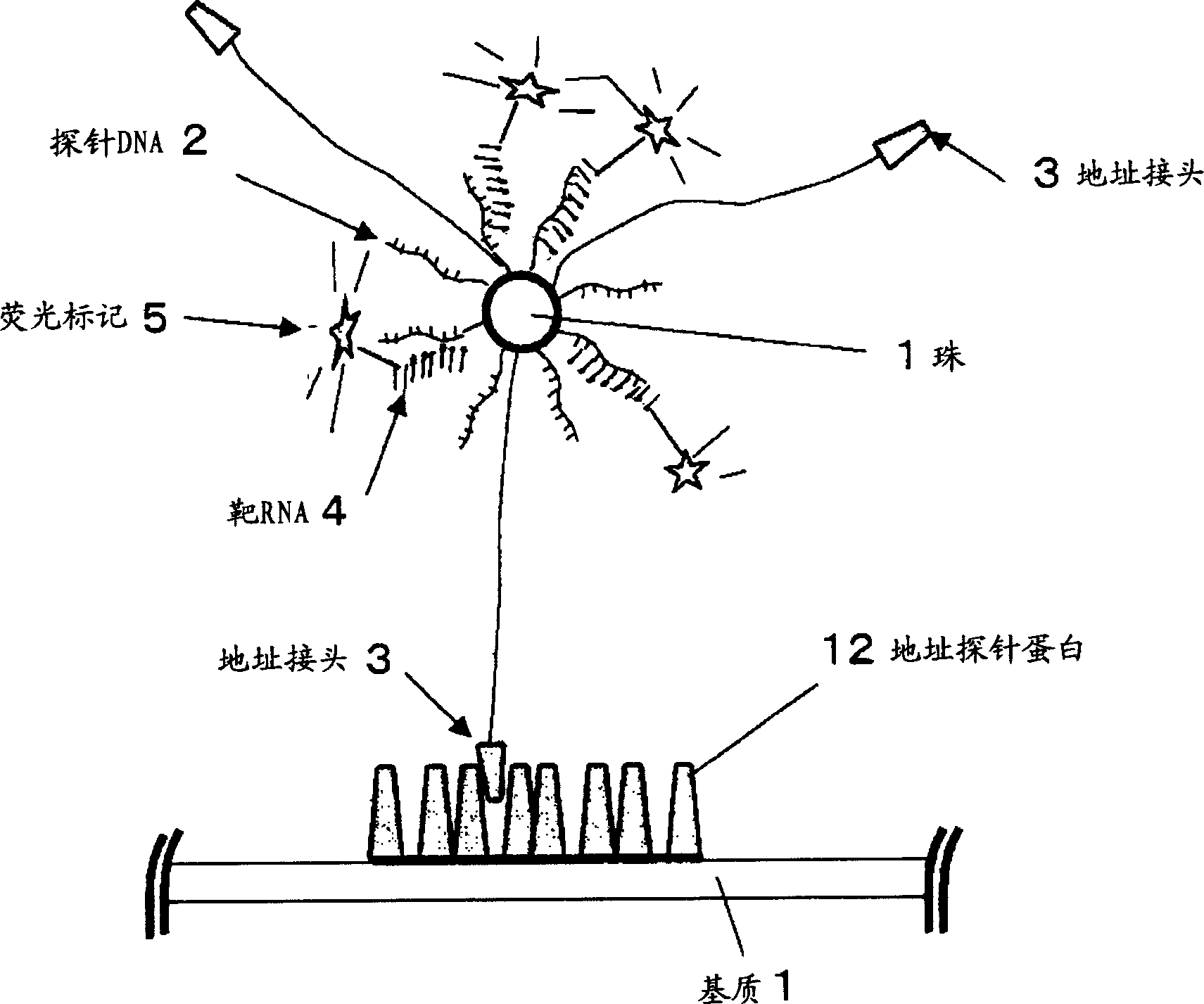Method of detecting biopolymer, biochip, method of fixing antibody, and substrate for fixing antibody thereon
A technology of biopolymers and polymers, applied in the field of immobilized antibodies and immobilized antibody substrates, can solve the problems of hindering the standardization of experimental data, difficult selection of disease content sequences, and difficult selection of target cDNA
- Summary
- Abstract
- Description
- Claims
- Application Information
AI Technical Summary
Problems solved by technology
Method used
Image
Examples
Embodiment Construction
[0013] In the present invention, the advantages of bead and DNA microarray technologies are combined. Beads provide a greater surface area (per volume) than plates, thus allowing more probe DNA to bind. In addition, the frequency of collisions between probe DNA and target molecules is increased due to the increased mobility of beads in solution compared to plates. Thus, the sensitivity of target DNA capture in solution is improved.
[0014] As a disadvantage, the individual beads on which the probe DNA is bound need to be identified. Various techniques, such as the use of colored beads and two-color light sources, have been tried to solve this problem. However, the number of beads that can be successfully identified remains small and the equipment becomes more complex, expensive, larger and more difficult to handle. The present invention provides a perfect solution to these problems by exploiting the antigen-antibody interactions that occur between peptide antigens immobili...
PUM
 Login to View More
Login to View More Abstract
Description
Claims
Application Information
 Login to View More
Login to View More - R&D Engineer
- R&D Manager
- IP Professional
- Industry Leading Data Capabilities
- Powerful AI technology
- Patent DNA Extraction
Browse by: Latest US Patents, China's latest patents, Technical Efficacy Thesaurus, Application Domain, Technology Topic, Popular Technical Reports.
© 2024 PatSnap. All rights reserved.Legal|Privacy policy|Modern Slavery Act Transparency Statement|Sitemap|About US| Contact US: help@patsnap.com










